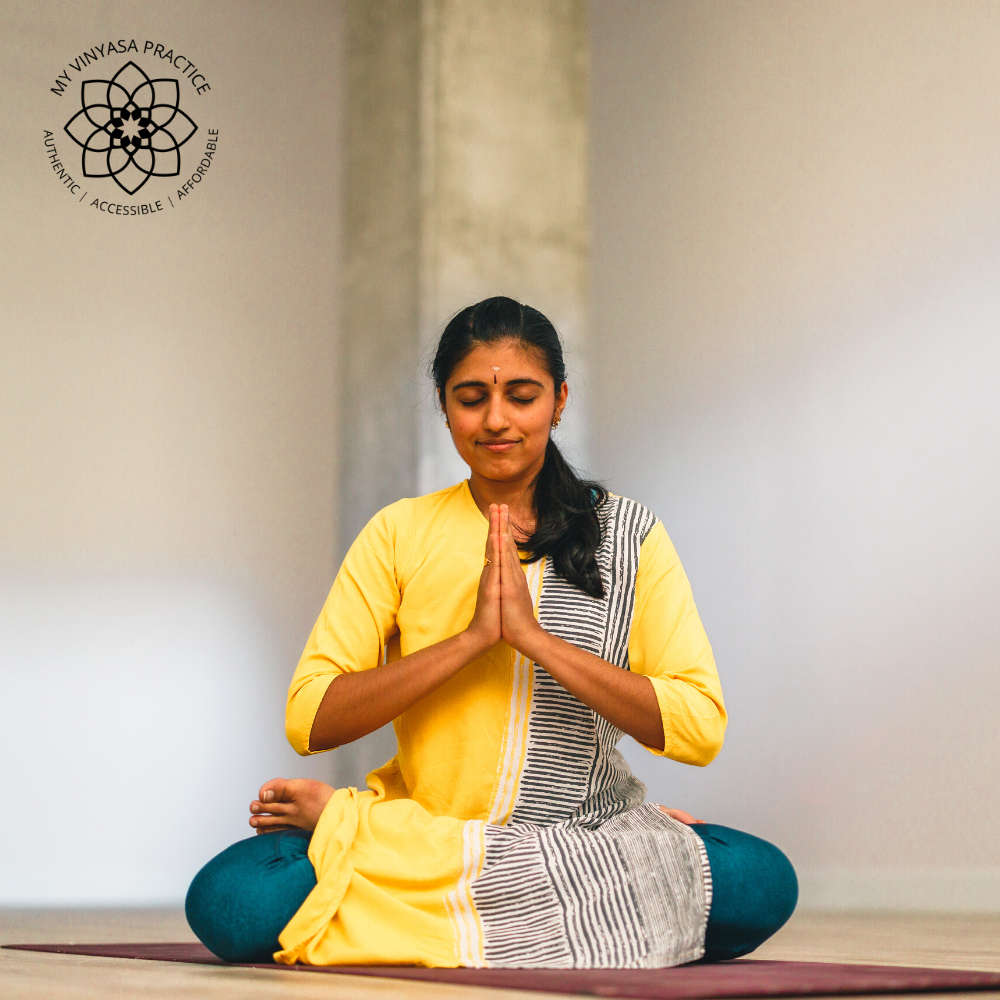Pranayama: Connecting to the Breath

In Sanskrit, prana means life and yama means control. In yoga, we practice pranayama by regulating the breath using specific techniques to achieve a certain result. There are several pranayama exercises, each with its own benefits. For example, by breathing fully and deeply and oxygenating the body, you can signal to your nervous system that you are okay.
By connecting to our breathing we can turn daily chores into meditations. Try slowing down your pace as you walk and inhale, take your time to fill both lungs patiently. As you exhale, consider the sensation of releasing all of the stale air from your lungs. Throughout the day as you sit in front of your computer or lose yourself in your work, notice what happens to the breath. Notice if it becomes shallow. You might even find controlled breathing leads to mental clarity and an overall sense of being present. Remembering to check in with the quality of your breathing can help to keep you grounded when you find yourself in an argument with a loved one or needing to make a tough decision.
Breathing Techniques
Box Breathing
Box Breathing is a simple four-part breathing technique that can be performed as a way to manage stress. To begin, take a cleansing breath in and exhale, let it go. With your next inhale, breathe into the count of four. Counting patiently, you can take your time to expand both lungs 360 degrees. Hold your breath to the count of four, notice if this causes any subtle emotional responses. Exhale to the count of four, you might release 25% of the air from your lungs per second. Hold at the bottom of your exhale to the count of four. Again, noticing if this pause triggers even a very subtle emotional response. Continue with this breathing pattern inviting ease into the patient ebb and flow of the four parts of your breath. It may help to visualize drawing the lines of a square, completing one side per part of the breath. This is a good technique to begin with if you are new to practicing pranayama. Take a look at this video by My Vinyasa Practice for a guide to box breathing!
Nadhi Shodhana – Alternate Nostril Breathing*
The benefits of this practice include: calming the mind, easing stress, inviting balance between the two hemispheres of your brain, reinvigorating the nervous system, and clearing energetic blockages. To begin, find an easy seat, and take a few rounds of cleansing breath. Hold the right hand out, palm facing up. Close the pointer and the middle finger to the middle of the palm, or press them gently to the forehead to use as an anchor.. With the thumb, gently plug up the right nostril. Inhale through the left nostril. Pause. Plug the left nostril with the ring and pinky fingers. Pause for a moment. Inhale, retaining your breath at the top for a moment. Exhale through the right nostril. Plug the right nostril with the thumb. Inhale through the left nostril. Pause. Exhale. Plug the left nostril and inhale through the right, Continue in this manner for 10 or so rounds of breath, finishing with an exhale on the left nostril, and then return to your normal breath.
*There are contraindications for those who are pregnant or have high blood pressure. If you experience dizziness or shortness of breath, return to the natural rhythm of your breath. If you are unsure if this practice is for you, you can speak to your doctor about whether or not these practices will benefit you.
Three-Part Breathing
This is a great practice to try before bed, as its benefits include winding down the nervous system. This practice is best done lying down. Begin by taking a few cleansing breaths as you relax throughout the body. Rest the palms of your hands on your low belly and inhale to inflate the belly like a balloon. Exhale, gently let it go. Take 3-5 rounds of breath like this. When you’re ready, move your hands up to rest on the rib cage. For the next 3-5 rounds of breath inhale to inflate the belly and then expand the rib cage. Gently exhale. From here, slide the finger pads to rest at the collarbones. For 3-5 rounds of breath, move the inhale from the belly to the rib cage, all the way up to where your fingers touch your collarbones. When you are through, release any manipulation of the breath and allow it to return to its natural rhythm.
Personal Practice
Of course, it could be beneficial to designate time every day to practice the different breathing techniques that serve your specific needs, but remember that so long as you have the capacity to focus your attention on your breath, you are already well equipped to get started. My Vinyasa Practice offers classes both online and in-studio that focus on a variety of different things. This month they are even promoting a Community Offering specifically to learn about Pranayama! If you decide to maintain your own personal practice and you cannot remember how to perform a specific pranayama practice, simply noticing the rise and fall of the breath and purposefully steadying it can be enough to settle you in moments of discomfort or offer clarity in moments of chaos.






